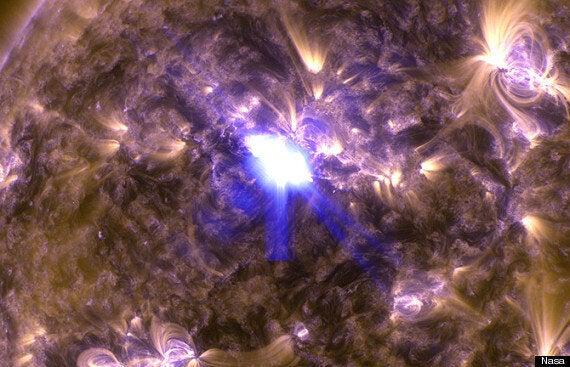The sun has unleashes the biggest solar flare of the year - sparking a sudden radio blackout here on Earth.
Nasa said that the powerful solar flare was a M6.5-class storm. It also coincided with a coronal mass ejection, where super-hot solar plasma combusts on the surface of the star.
The flare was strong enough to create a short-lived radio communications blackout after it was recorded on 11 April.
But it was still a relatively middle-of-the-road flare by the sun's standards, with more powerful eruptions expected towards the end of 2013 as it moves towards 'Solar Maximum' in its regular 11-year cycle.

Above: Nasa's Solar Dynamics Observatory captured this image of a powerful M6.5 class flare, the strongest of 2013
Compared to the strongest flares the Sun can produce - so-called X flares - the M6.5 incident was about ten times as weak.
The strongest flares can be hazardous to astronauts, and some scientists even think it may cause a non-trivial increase in the risk of cancer for people here on Earth.
World governments including the UK are currently studying the potential impact of a major flare on infrastructure including communications and electricity grids.
The last recorded superstorm was in 1859, when the 'Carrington event' caused visible auroras around the world, of a type which are normally just seen at the poles.
Earlier this year the Royal Academy of Engineering said another storm of this scale was "inevitable", and warned that aspects of the UK's modern infrastructure were not all prepared to cope.
It said that a superstorm "will degrade the performance of the electricity grid, satellites, GPS systems, aviation and possibly mobile communications".
The Academy called for radiation alerts to be placed on the ground, in space and in aircraft to "minimise and quantify the risk".
"Consideration should also be given to classifying solar superstorms as radiation emergencies for air passengers and crew, although the radiation levels concerned are borderline," it said.
